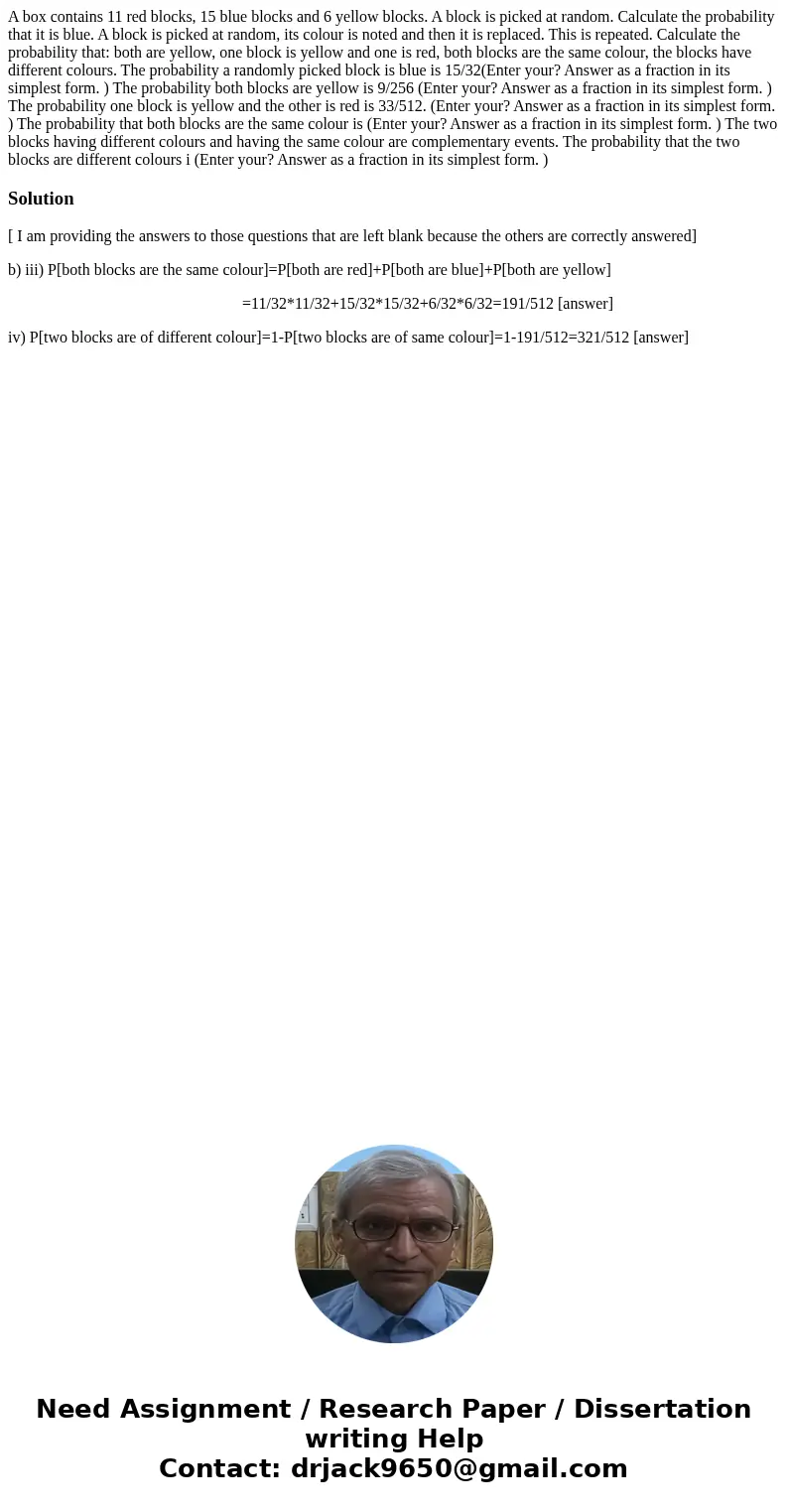A box contains 11 red blocks 15 blue blocks and 6 yellow blo
A box contains 11 red blocks, 15 blue blocks and 6 yellow blocks. A block is picked at random. Calculate the probability that it is blue. A block is picked at random, its colour is noted and then it is replaced. This is repeated. Calculate the probability that: both are yellow, one block is yellow and one is red, both blocks are the same colour, the blocks have different colours. The probability a randomly picked block is blue is 15/32(Enter your? Answer as a fraction in its simplest form. ) The probability both blocks are yellow is 9/256 (Enter your? Answer as a fraction in its simplest form. ) The probability one block is yellow and the other is red is 33/512. (Enter your? Answer as a fraction in its simplest form. ) The probability that both blocks are the same colour is (Enter your? Answer as a fraction in its simplest form. ) The two blocks having different colours and having the same colour are complementary events. The probability that the two blocks are different colours i (Enter your? Answer as a fraction in its simplest form. )
Solution
[ I am providing the answers to those questions that are left blank because the others are correctly answered]
b) iii) P[both blocks are the same colour]=P[both are red]+P[both are blue]+P[both are yellow]
=11/32*11/32+15/32*15/32+6/32*6/32=191/512 [answer]
iv) P[two blocks are of different colour]=1-P[two blocks are of same colour]=1-191/512=321/512 [answer]

 Homework Sourse
Homework Sourse